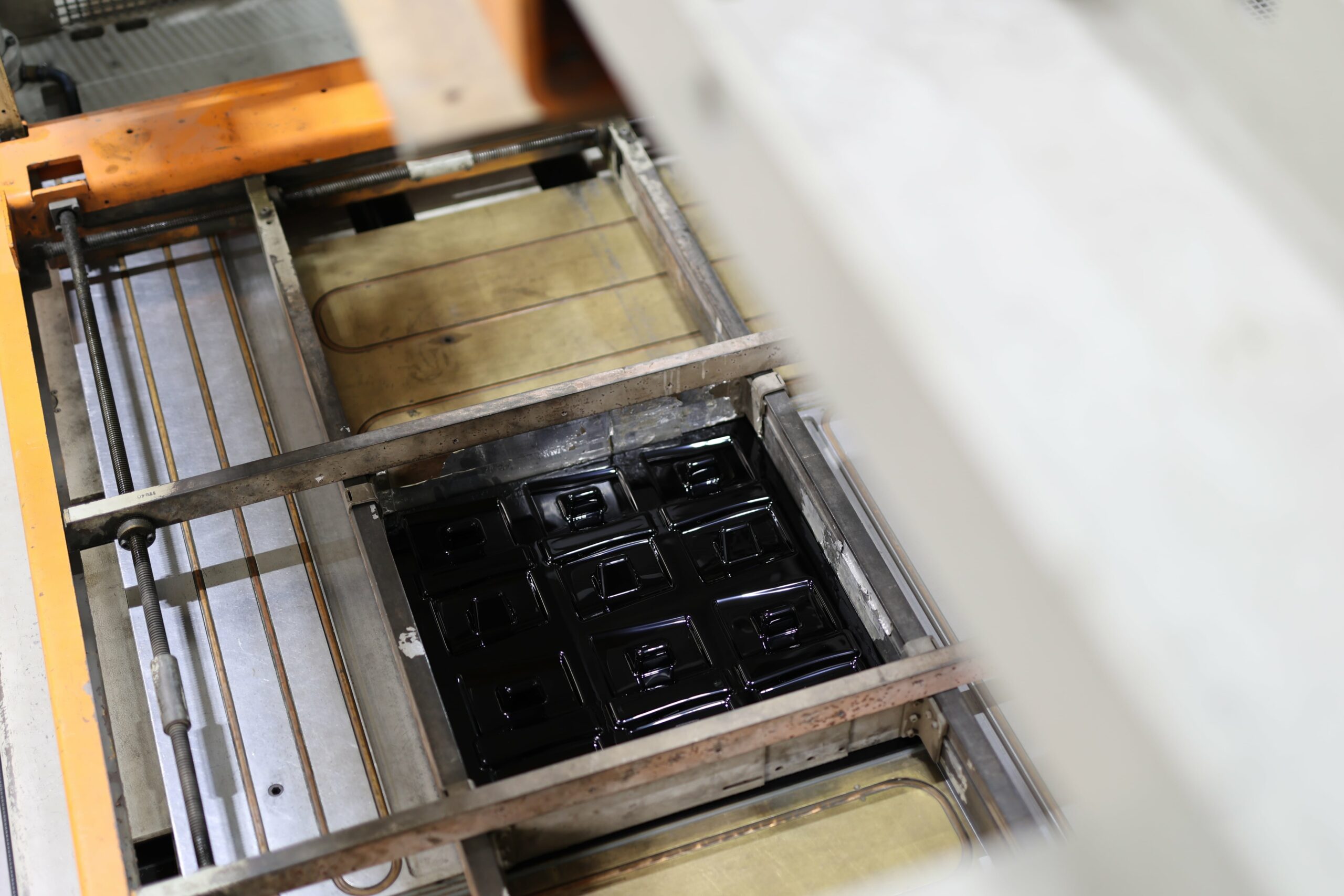At Plas-Tech Thermoforming, we specialise in delivering high-quality vacuum-formed products that meet the exacting needs of our clients. From prototyping to full-scale production, vac forming offers exceptional versatility across industries such as automotive, aerospace, and packaging. However, to achieve the best results from vacuum forming, it’s essential you carefully consider the design of your product.
With that in regard, take a look at some key design steps to optimise your product for vacuum forming, helping you get the most out of this efficient and cost-effective manufacturing process.
Step 1 – Understand the Vac Forming Process
Vacuum forming involves heating a sheet of plastic until it becomes pliable, then stretching it over a mould and using vacuum pressure to shape it. The simplicity of the process makes it ideal for creating both prototypes and production components. At Plas-Tech, our advanced vacuum forming machines can handle sheets up to 2.4 x 1.4 metres, which makes it possible to precisely create small up to large components.
However, as with any manufacturing method, understanding the limitations and strengths of vacuum forming is key to achieving the best results. For example, vac forming is ideal for parts with relatively simple shapes, shallow depths, and uniform wall thickness. Complex shapes can be produced, but they require careful planning and consideration in the design stage to avoid issues such as thinning or webbing of the material.
Step 2 – Choose the Right Material
Selecting the appropriate material for your vacuum-formed product is vital. At Plas-Tech, we work with a wide range of thermoplastics, including ABS, HIPS, polypropylene, HDPE, and polycarbonate. Each of these materials has unique properties that make them suitable for different applications.
ABS is often used for durable, impact-resistant components, which makes it ideal for automotive and industrial applications. HIPS, on the other hand, is commonly used in packaging and point-of-sale displays due to its printability and cost-effectiveness. Choosing the right material will depend on factors such as durability, flexibility, temperature resistance, and visual requirements.
We offer a variety of textures and finishes, including high gloss, soft feel, and decorative foils, allowing you to customise the look and feel of your product. You can also choose from stock or custom colours to align with your brand or the specific needs of your project.
Step 3 – Consider Wall Thickness & Draft Angles
One of the most important considerations in vac forming is maintaining uniform wall thickness throughout your product. During the vacuum forming process, the plastic sheet is stretched over the mould, which can lead to thinning in areas where the material is pulled the most. To avoid this, your design should account for the way the plastic flows and ensure that any areas prone to thinning are correctly reinforced.
Incorporating draft angles into your design is also essential for ensuring that the finished part can be easily removed from the mould. Draft angles, typically between 3° and 5°, help to prevent the formed plastic from sticking to the mould and minimise the risk of damage when de-moulding.
Step 4 – Optimise the Mould Design
At Plas-Tech, we handle all tooling in-house, offering both Ureol prototype tools and aluminium production tools to meet the demands of different projects. When designing a vacuum-formed product, it’s important to work closely with the tooling team to ensure the mould is optimised for production.
Ureol is the ideal choice for prototyping, as it offers a fast and cost-effective way to test and refine your design before committing to full-scale production. Aluminium tools, which we manufacture in our state-of-the-art machining centre, provide the durability needed for high-volume production whilst ensuring the highest levels of consistency and precision.
Step 5 – Account for any Material Shrinkage
Plastic materials naturally shrink as they cool after vacuum forming. Whilst this shrinkage is usually minimal, it’s important to consider it in the design phase. The exact amount of shrinkage will depend on the type of material used, but it generally ranges between 0.5% and 1%. At Plas-Tech, we use advanced CAD/CAM technology to precisely calculate and accommodate for shrinkage, ensuring that your finished product meets the required dimensions.
Step 6 – Think about Post-Forming Processes
Once your product has been vacuum-formed, additional processes such as trimming, cutting, or finishing may be required. At Plas-Tech, we offer a range of secondary operations, including CNC trimming and finishing, to ensure that your product meets your exact specifications. During the design phase, it’s essential to consider these post-forming processes to ensure the product can be efficiently and accurately finished.
Specialist Vac Forming with Plas-Tech Thermoforming
Whether you need a rapid prototype or a full-scale production run, our extensive experience and in-house tooling capabilities can make us the ideal partner for your vac forming needs.
At Plas-Tech, we pride ourselves on delivering high-quality, reliable service with a focus on precision, efficiency, and customer satisfaction. From material selection and mould design to final production, our expert team is here to help. For more information on how we can assist with your next project, get in touch with us today.
